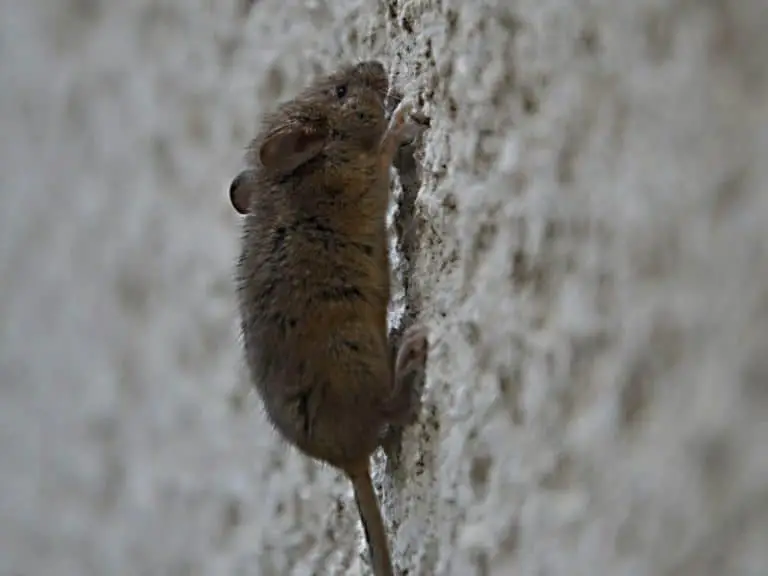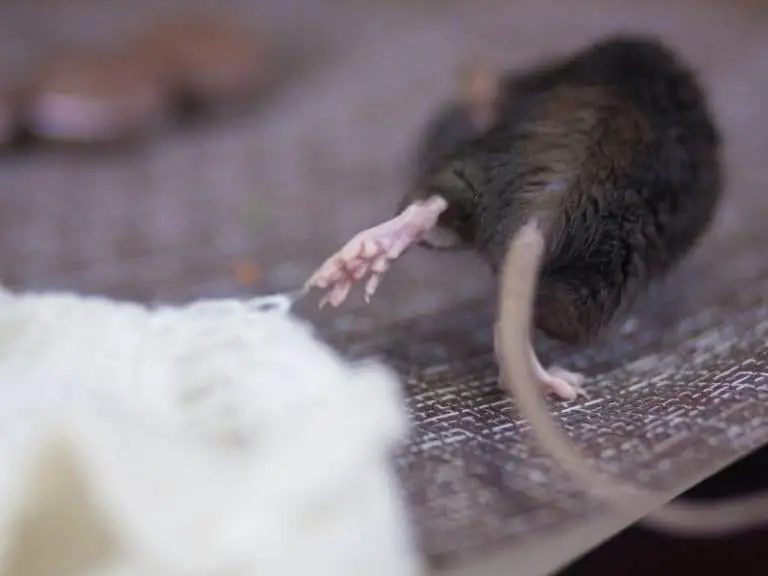Do Mice Come Back Once Released And How Far From Home They Travel
Some people prefer to use poison bait to kill mice while others opt to catch them in the most humane way possible, but if you do this method, you might be wondering if mice can come back to your place once released?
A mouse will come back if it was released right next to the house where it was captured. A mouse must be released at least 2 miles away from the home to make it difficult to trace back home. It is because house mice do not recognize anything outdoors, and they eager to get back to the original shelter and food source.
In 1999 a group of scientists from Colorado performed a study where they tested how far can a mouse travel when moved off the original habitat. According to the study, on average mice will go back home from a distance of 394 m (1300 ft) within 24 hours.
Some mice were able to get back when they were release 1980 m (1.2 mile) from home, although it took about 2 weeks. Those persistent rodents were even able cross rivers, which is fascinating.
Much like us, mice are sociable creatures. They become attached, love their families, and enjoy playing and roaming around the house.
That is why when you use humane, live-catch traps, you should be keen because mice have a homing instinct, wherein they can come back to the house quickly; therefore, you need to release them miles away.
By the way, if you need recommendations, here is a list of the most humane mice traps that are safe people and pets.
How To Release Captured Mice Properly?
Humane and live-catch mice trapping are something of a pain since you need to release them properly faraway from your home and must be in a surrounding where they can get access to food and water.
Box traps and the live cage will remain humane as long as you check them every couple of hours. Mice and rats can die from suffocation, dehydration, or stress-induced disorders just a few hours after you caught them. So make sure they can get access to air and water while you are not yet ready to release them.
You can read my previous review post about the best humane mouse trap so that you can have an idea about what to buy and how to use them.
However, catching mice in the most humane method does not end up using a humane mouse trap and giving them enough air to breathe and food sources.
In fact, the most crucial thing happens when you are about to release since there are some few tips to consider:
- Captured live mice can be kept calm by placing a towel over the trap
- Make sure they get enough air to avoid suffocation and water to combat dehydration.
- Release them at least 100 yards away from where they were trapped
- Make sure to release them in a suitable habitat where they can find adequate food, water, and shelter.
After doing this, yet you still find rodents inside your house after several days of live-catching, make sure that all entry points are sealed properly. Then reset the mice traps and continue to keep them baited.
If the baited trap remains untouched for two weeks, well, congratulations, there are no more signs of mice infestations, and they have been removed successfully.
Even though mice are considered pests, they still deserve our respect and compassion, so we must use the best possible humane methods when looking for solutions on how to get rid of them.
To know more about mice, here are some fascinating mice facts you never knew about them:
10 Cool Facts About Mice You Probably Never Knew
House mice are known to be the most common pest in the United States, so it is no wonder that many homeowners are distressed when dealing with mice infestations every time they encounter one or a colony of mice.
Because mice are so common, you may assume that you already know all the things about them, well, think again!
Here are ten fascinating facts about mice that you probably don’t know:
Mice have big appetites
You may see these mice small despite their tiny bodies, but mice can eat between 15 to 20 times a day. Due to their frequent eating habits, they prefer to build their shelter need for any food sources.
Usually, they live around human structures such as walls, storage boxes, attics, cabinets, warehouses, and other similar locations.
They prefer to live near to food and water sources, typically within 30 to 50 feet.
Mice have relatively short lifespans
In the wild, mice usually live for about a maximum of five months. It is because they are eaten by predators such as snakes, cats, and foxes.
On the other hand, if mice are used as experimental subjects, they can live up to two years in a controlled lab setting.
Mice are little gymnasts
It is evident that mice are good jumpers, climbers, and even swimmers. In fact, mice can jump up to 12 inches into the air, which helps them climb onto the kitchen counters to get food.
To avoid mice getting in contact with your food, store all pantry items in rigid, plastic containers with a tightly sealed lid.
Mice can squeeze through the tiniest gaps
Yes, you read that right. Mice can squeeze through a 0.6cm gap by flattening out their bodies. That’s liked the size of a pencil!
Because of this ability, it is recommended that when you are preventing mice, you need to thoroughly inspect your property for any gaps or holes so that you can fill and block them using expanding foam or wire wool.
Mice are not potty-trained
I guess it is an obvious fact, but did you know that house mice can produce 40 to 100 drops of urine per day? Besides, house mice consistently give off micro-droplets of urine as they roam around your house every day.
Of all the filthy activities of mice, there’s one good thing about them. Fortunately, house mice do not vomit, just like other rodents.
Mice teeth never stop growing
Just like with other rodents, mice have a set of incisor teeth that never stop growing. Their teeth grow at a rate of 0.03cm per day.
Because of this, mice need to gnaw consistently, which ranges anywhere from cardboard boxes to wires, even furniture, to grind their teeth to a reasonable length.
Otherwise, their teeth would simply continue to grow, which can obstruct their ability to get food into their mouth and cause them to die.
Mice have excellent hearing
Yes, you read it right! Mice’s hearing is superb compared to ours. Studies show that mice can hear ultrasound up to 90kHz.
Moreover, they also use ultrasound for communication with other mice, and they even serenade female mice with love songs. That’s awesome!
Mice spread more germs than you know
You know that mice can spread diseases such as Salmonella and Hantavirus since they crawl in dirty places looking for food. They also cause Leptospirosis from their urine, but that’s just the beginning.
As a matter of fact, mice can carry as many as 200 human pathogens, so make sure you always wash your hands if you get in contact with them.
Mice are omnivorous
There’s one thing that mice and humans have in common, that’s the fact we both loved to eat.
Mice are omnivorous and will eat much anything they can get their hands on. In addition, they love to stop off at different food stands during their adventures.
On an average night, mice can take 20 to 30 visits to various food sites each night and take as little as 0.15g of food per location.
Female mice can give birth at only two months old
Female mice can give birth up to a dozen babies every three weeks; even she’s only at two months old. It means that she can have as many as 150 offspring in a year!
Therefore, if you spot a mouse in your house, assume that there will be more coming up soon. Hence, it is best to try different mouse traps or poisons before mice infestations go out of control.
Conclusion
Mice have an excellent sense of direction; that is why once you caught them using a humane, live-catch trap, it is advisable if you release them at least 2 miles away from your house so that they can no longer find their way back.
But, before you release them, make sure to find a place where they can get access to food and water, or else, using a humane method of catching them would be nonsense.
Photo credit: ©canva.com/creativenature_nl
Medical Disclaimer: TheHomePestControl is a digital publisher and does not offer personal health or medical advice. The contents of this website are not intended to substitute for professional medical advice, diagnosis, or treatment.
Affiliate Disclaimer: As an Amazon Associate, I earn from qualifying purchases made on our website. If you make a purchase through links from this website, I may earn a commission at no additional cost to you.






